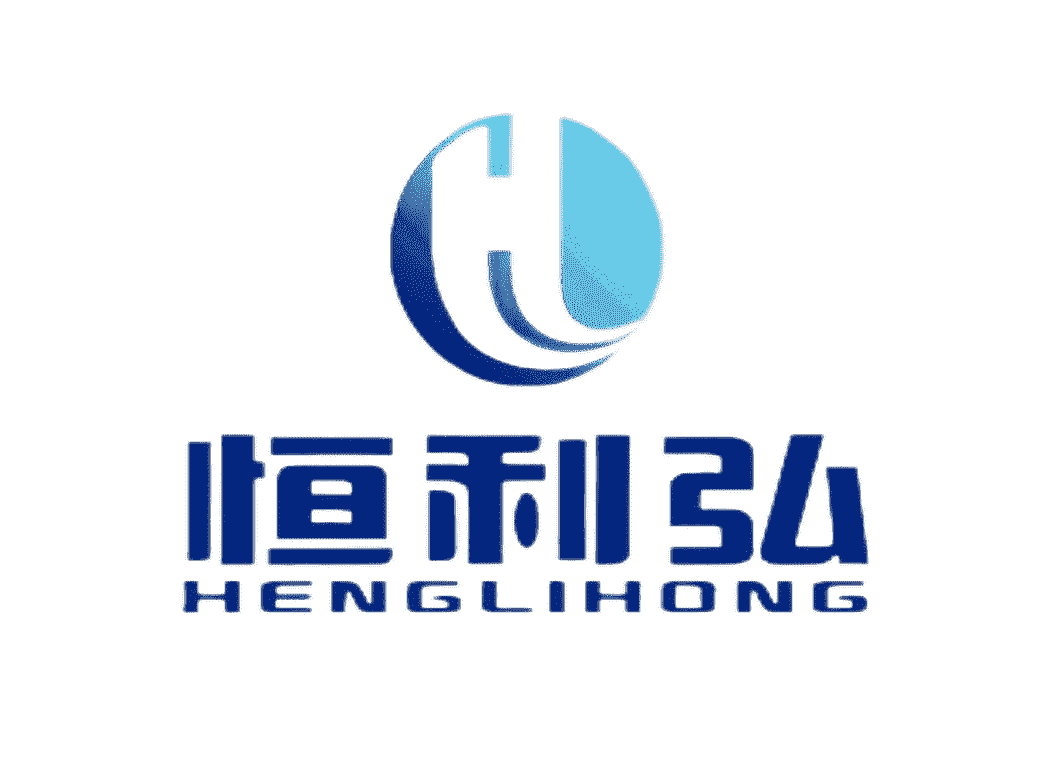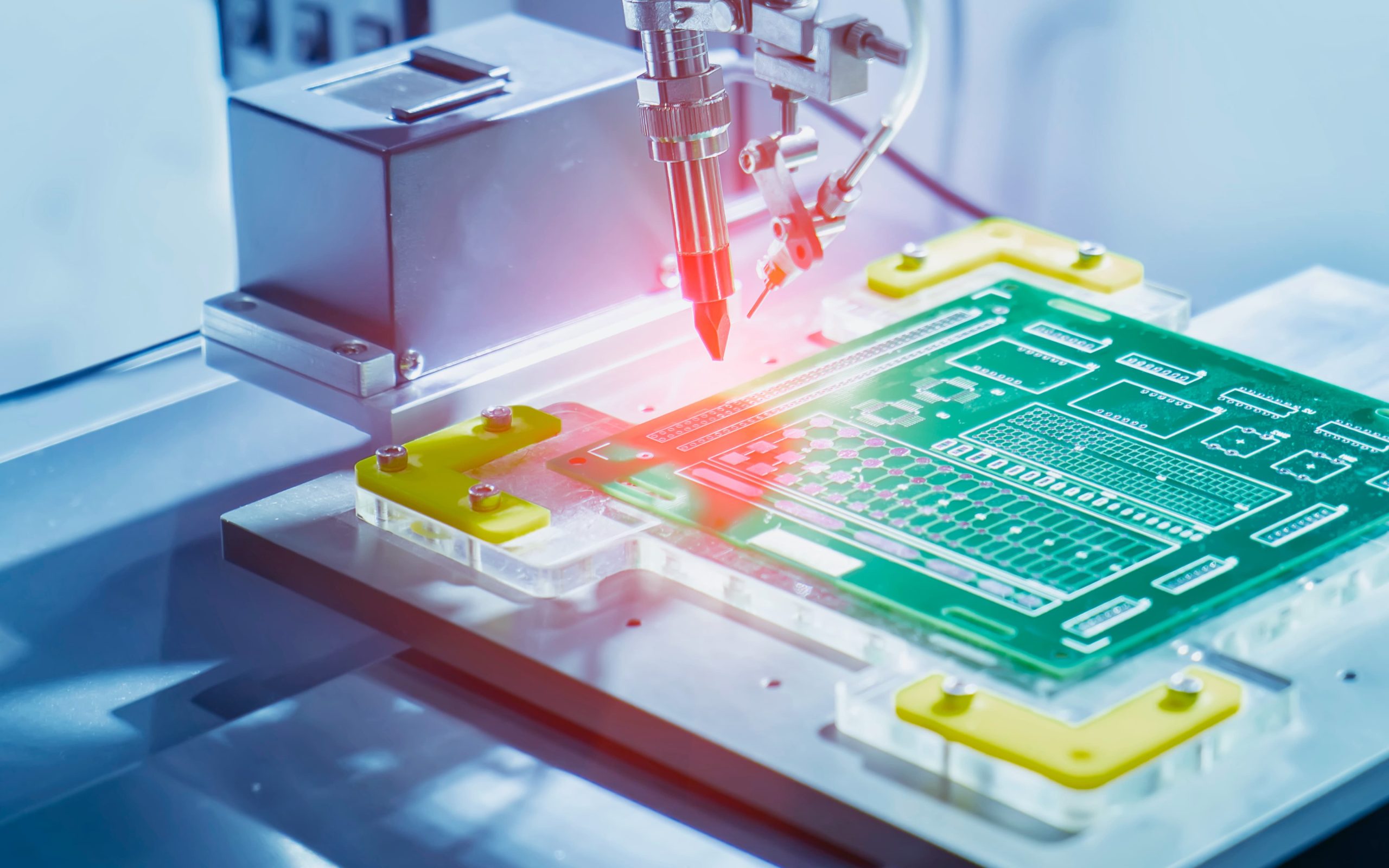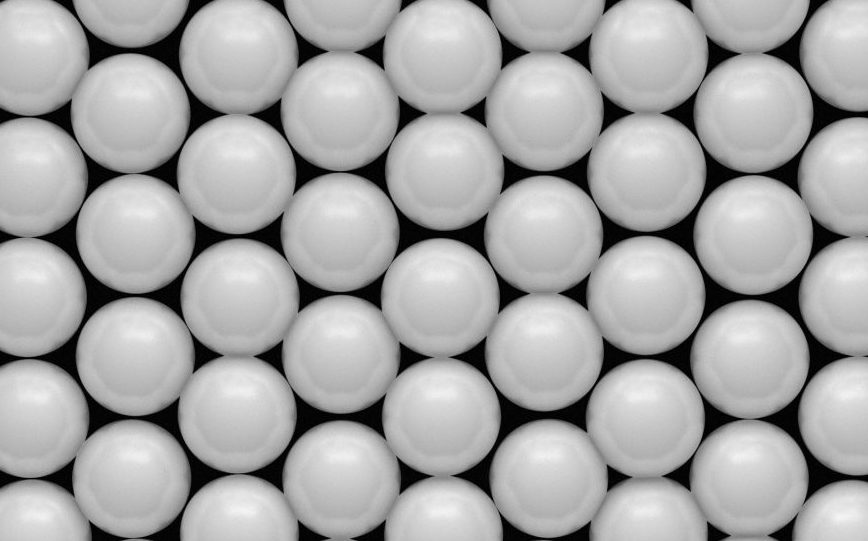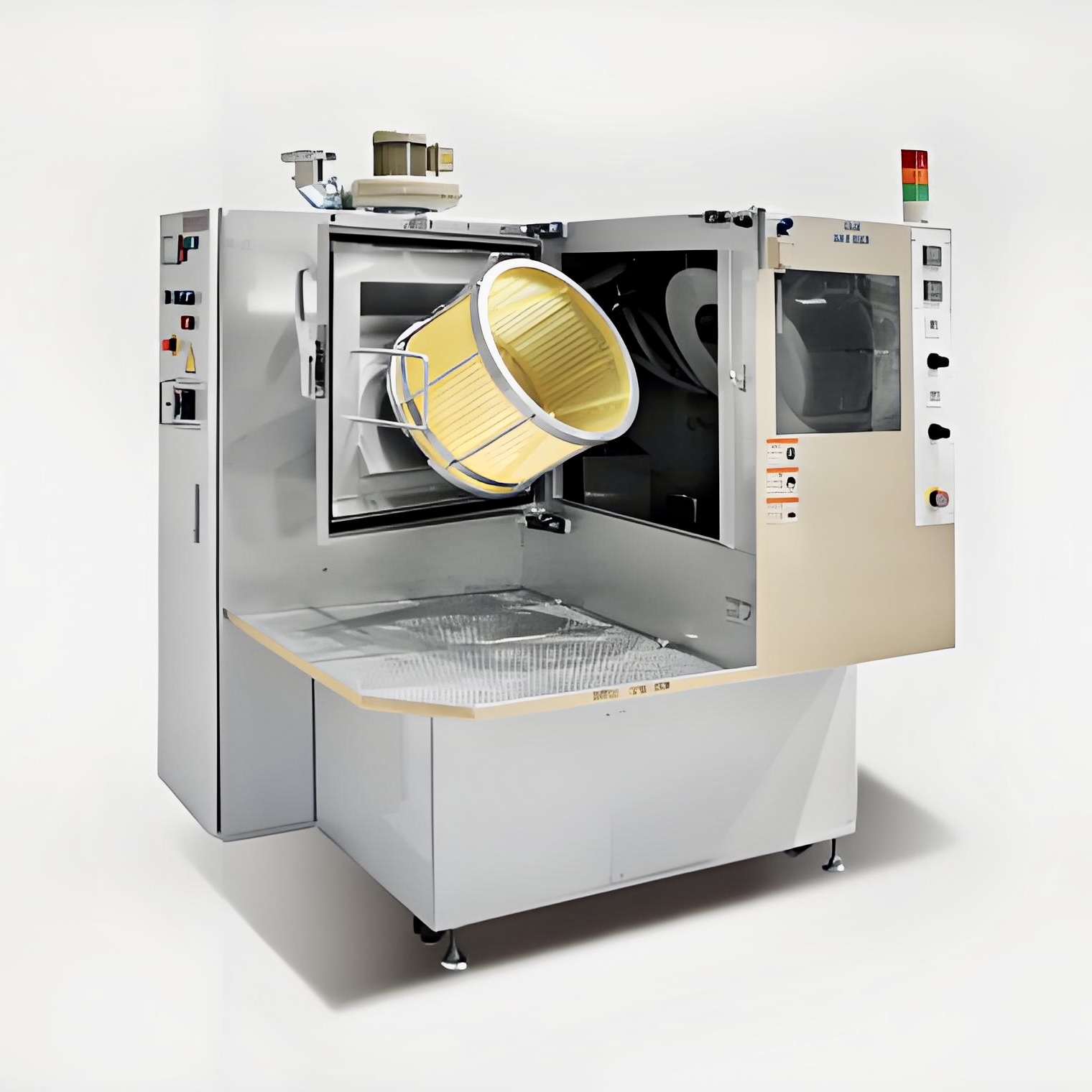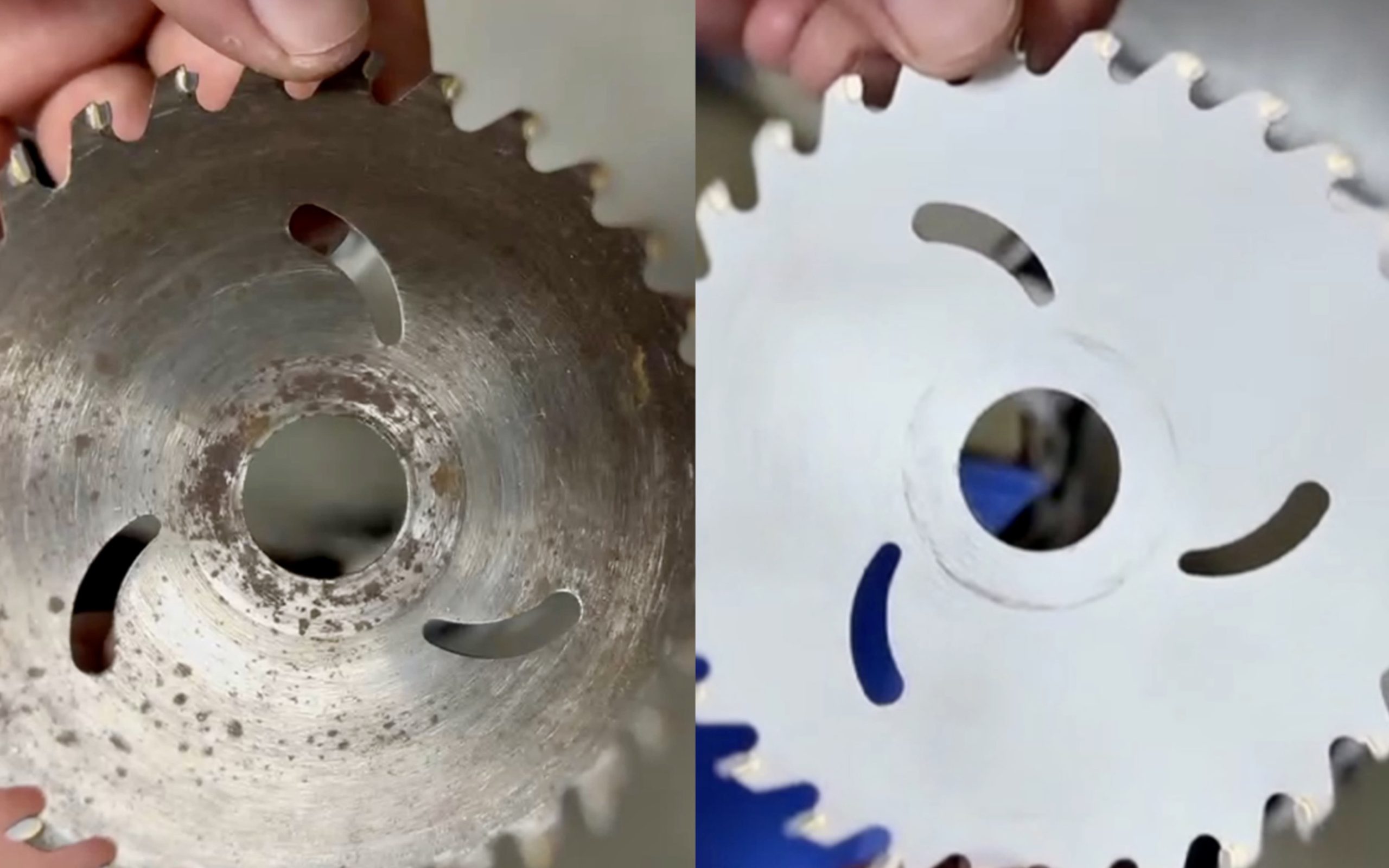Molecular-Scale Precision Deburring: Revolutionary Applications of PA6 Nylon Particles in 3D Printing
Март 27, 2025
3D printing (additive manufacturing) has revolutionized industries such as aerospace, medical, and automotive. However, due to the layer-by-layer deposition process, printed parts often exhibit burrs, support residues, and rough surfaces, affecting their quality and performance. Post-processing is essential to improve surface finish, and abrasive blasting is a widely used technique.
Among blasting media, polystyrene (PS) microbeads stand out due to their low hardness, excellent elasticity, and recyclability. This article explores their characteristics, applications, and advantages in 3D printing post-processing, highlighting their potential for high-precision surface finishing.

Material Properties of Polystyrene Microbeads
Polystyrene microbeads are solid, spherical particles typically produced through polymerization or suspension polymerization techniques. Their particle size can be adjusted based on application requirements, typically ranging from 10μm to 500μm. Key physical and chemical properties include:
Low Hardness (Mohs hardness of ~1.2–2.5)
Compared to glass beads, ceramic grit, and aluminum oxide, PS microbeads have lower hardness, ensuring minimal surface wear and making them suitable for finishing precision components.
Excellent Elasticity and Energy Absorption
The elastic nature of polystyrene allows microbeads to absorb impact forces during blasting, reducing damage to the workpiece while ensuring uniform deburring.
Spherical Structure and High Flowability
Due to their uniform spherical shape, PS microbeads ensure consistent surface finishing and reduce the risk of clogging in blasting equipment.
Low Density (0.9–1.1 g/cm³)
Compared to glass beads (~2.5 g/cm³) and ceramic grit (~3.9 g/cm³), the lower density of PS microbeads helps reduce wear on blasting equipment, extend nozzle life, and minimize impact forces on delicate 3D-printed parts.
Chemical Resistance
cPS microbeads can withstand weak acidic and alkaline environments without leaving chemical residues on treated surfaces, making them ideal for applications requiring high material purity, such as in the medical and electronics industries.
Recyclability and Environmental Benefits
Due to their impact resistance and low breakage rate, PS microbeads can be reused multiple times, reducing costs and minimizing environmental impact.
Applications of Polystyrene Microbeads in 3D Printing Post-Processing
Deburring and Removal of Support Structures
In FDM (Fused Deposition Modeling), SLS (Selective Laser Sintering), and SLM (Selective Laser Melting) processes, printed parts often retain support structures, unfused powder, or material burrs. Using PS microbeads for blasting can:
- Efficiently remove residual support structures, improving surface smoothness;
- Eliminate burrs in a controlled manner without affecting dimensional accuracy;
- Be applied to thin-walled or intricate components without causing excessive material loss.


Reduction of Stair-Stepping Effects and Surface Roughness
The layered nature of 3D printing often results in visible stair-stepping effects, particularly in FDM and SLA processes. Fine blasting with PS microbeads can:
- Smooth out surface irregularities and reduce roughness;
- Enhance the aesthetic and tactile qualities of printed parts, reducing the need for additional polishing or coating;
- Improve aerodynamic and fluid-dynamic performance in applications such as UAV casings and automotive components.
Cleaning and Precision Finishing of High-Accuracy Components
For applications in medical implants (such as 3D-printed bone scaffolds and prosthetics) and electronic enclosures, surface quality is critical. The low-hardness properties of PS microbeads make them ideal for:
- Removing residual powder from SLS/SLM metal parts while ensuring a contamination-free surface for medical-grade components;
- Providing a uniform matte or semi-gloss finish to enhance the aesthetic and functional properties of metal and plastic parts;
- Enhancing fine details of complex geometries without structural damage.
Surface Modification of High-Performance Polymers Components
For 3D-printed parts made from high-performance polymers such as nylon, ABS, and PEEK, PS microbeads can:
- Improve adhesion for coatings or adhesives by microscopically roughening the surface;
- Reduce electrostatic effects, minimizing dust attraction—an important feature for cleanroom applications;
- Enhance the durability and tactile feel of electronic device casings.
Comparison of Polystyrene Microbeads with Other Blasting Media
| Взрывчатые вещества | Твердость | Suitable Materials | Surface Damage | Возможность вторичной переработки | Типовые применения |
|---|---|---|---|---|---|
| Polystyrene Microbeads | Low (1.2–2.5) | Plastics, resins, metals | Низкий | Высокий | Precision deburring, fine detail finishing |
| Стеклянные бусины | Medium (5–6) | Metals, composites | Medium | Высокий | General surface treatment |
| Ceramic Grit | High (6–7) | Hard alloys, coatings | Высокий | Низкий | Aggressive deburring |
| Оксид алюминия | Very High (8–9) | Hard metals | Высокий | Низкий | Large-scale material removal |
As shown in the table, PS microbeads are particularly suitable for precision deburring and low-damage surface treatment, making them an excellent choice for lightweight structures and high-performance polymers.
As a blasting medium, polystyrene microbeads offer a broad range of advantages in 3D printing post-processing. Their low hardness, excellent elasticity, recyclability, and ability to provide controlled surface finishing make them highly valuable in aerospace, medical, automotive, and electronics manufacturing industries.
In the future, the performance of PS microbeads could be further optimized through advancements in particle size control and surface modification. Additionally, their integration with automated blasting systems and smart post-processing technologies will enhance efficiency and consistency, allowing them to play a greater role in precision manufacturing. As additive manufacturing continues to evolve, PS microbeads are poised to become a key component in the production of high-quality 3D-printed parts.
Фильтры

